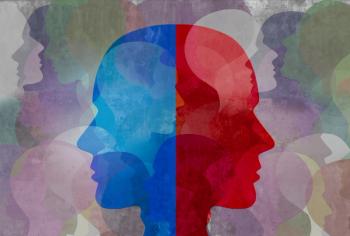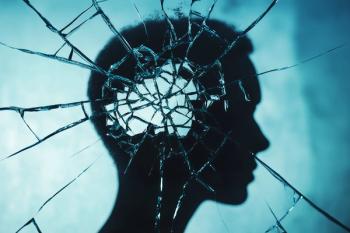
When Symptoms Are Not Necessarily Signs of Illness: Rethinking Synchronicity in Psychiatry
Key Takeaways
- Psychiatry's shift towards science risks overshadowing its artistic essence, with synchronicity offering a bridge to deeper understanding.
- Synchronicity challenges the brain-centric model, suggesting minds are interconnected with the environment, enhancing therapeutic outcomes.
Explore the intersection of synchronicity and psychiatry, revealing how meaningful coincidences can enhance understanding and healing in mental health.
Psychiatry is an old art but a new science. The science has proven immensely valuable, particularly an interactionist neuroscience which can help us to sophisticate our understanding of people and their problems. But as Jonathan Rowson, PhD, has said, “neuroscience is a new card in the explanatory deck for human behavior, and a powerful one, but it is not a trump card, and should not be played as such.”1 Is it possible that the science has so thoroughly eclipsed the art that we have lost something essential? Should we—and could we—restore the soul of psychiatry?
Even more importantly, can we then better understand the apparent planetary mental illness?
I have recounted how, in the early days of my residency, a kind fellow resident—the son of a minister—was concerned that my interest in coincidence and other supposedly fringe areas led him to fear that I was psychotic.2 I pointed out that I, like his father, was simply trying to incorporate the Divine into my life and into psychiatry. This was in the 1960s when “psychosis” was often used injudiciously—before Rosenhan, the UK-US Diagnostic Study, and other work showing how common atypical perceptual experiences are. It was also before functional views of illness as suffering and impairment became standard. I had no actual symptoms of psychosis, but his concern is central to this article.
Jung Opens the Window to Synchronicity
The signature story of synchronicity is well known. A highly educated woman came to Jung, whose therapy required softening her rigid rationalism. As she described a golden scarab seen in a dream, Jung heard tapping on the window. He caught a scarabaeoid beetle resembling her dream image and handed it to her: “here is your scarab.” The coincidence loosened her world view, enabling therapy to succeed.3 This vignette and many like it challenge the reigning scientific model that mind is purely brain-based, hinting that minds are embedded in environment, deeply connected to the living world.
Research on Prevalence of Meaningful Coincidences
In a University of Missouri study, over 700 participants completed the Weird Coincidence Scale (WCS). About 1 in 3 reported frequent meaningful coincidences, most commonly thinking of someone before hearing from them or thinking of an idea before encountering it in media. These were not associated with psychosis, mania, or disordered thought.4
Pninit Russo-Netzer’s large-scale Israeli study of over 3000 participants found that 80% reported having had experienced at least 1 meaningful coincidence. Those high in meaning-seeking and spiritual orientation reported more, but without increased psychopathology.5 These experiences often correlated with increased reflection, decision clarity, and coherence.
Synchronicity in Psychiatry
Meaningful coincidences can take several forms including synchronicity, serendipity, seriality, and simulpathity (see
Definition: A meaningful coincidence usually in a narrow time window of 2 or more causally unrelated events that share similar meaning.
Characteristics: Low probability; mind-environment connection; parallel patterns; emotional intensity; ambiguity of meaning.
Primary explanation: Someone notices the coincidence for one to exist. Theories draw from archetypes, nonlocality, and complexity theory. People reporting frequent coincidences tend to be more spiritual or religious.
I am developing a new theory of a subset of meaningful coincidences that incorporates a possible relationship between the ephaptic coupling of the brain’s neurons, the human biofield which is increasingly being measured and plasma, the fourth state of matter.
In psychotherapy: discussing coincidences can reassure patients these experiences are common; strengthen alliance; enhance spirituality and gratitude; and increase awareness of subjective-contextual links.
When Reports of Synchronicity Are Not Signs of Psychosis
A normally functioning person may feel deeply perplexed by frequent, intense coincidences, as in Case 1 and 2.
Case 1: When Coincidences Become Guides
“Janet,” a middle-school teacher, traveled over 1000 miles seeking help after experiencing significant coincidences as often as 5 times a week. Some were lighthearted, others opened unexpected opportunities, and some were so uncanny they left her questioning her sanity and beliefs. Over 3 90-minute sessions, she processed dozens of events. She began to see them not as evidence of illness but as prompts to trust her inner compass. Back home, she felt more confident, open, and willing to follow these “compels,” seeing them as “teachers nudging [her] to grow.”6
Case 2: Finding Purpose as a “Coincidence Seeker”
“April,” a 40-year-old woman from a rural community presented with anxiety over “weird things happening.” She documented patterns—names, dates, objects—such as a TV listing showing her late father’s name beside his birthday. Her history included bipolar II disorder with intermittent hypomania. She interpreted coincidences as symbolic reassurance about her deceased father and her corneal transplant donors, whose birthdates she tattooed on her arms. While her search drained her clinician, introducing the term “synchronicity” framed her experiences without judgment, allowing engagement. She accepted her role as a “coincidence seeker,” finding purpose and stability.7
There are several important issues here. Gregory Bateson reminded us, “the major problems in the world are the result of the difference between how nature works and the way people think.”8 This often applies to people with difficulties. Misdirected attention is a common underlying problem that leads to distress, leaving many feeling a mismatch between their own emotions and cognitions and the world around them. Synchronicities can sometimes help them see themselves and their struggles from a new perspective.
Mental illnesses are not merely mechanical malfunctions of discrete circuits or modules. As McGilchrist notes, brains and minds are conscious, adaptive, interconnected systems, and any illness is a change in a person’s way of being in the world, not a thing located only in the brain.9
The natural sciences collect observations, categorize them, and build testable hypotheses. We have spent decades collecting examples of meaningful coincidences and invited critiques from mathematicians to neuroscientists. Some invoke the “law of large numbers,” cognitive theories of “filling in,” or label them magical thinking. Yes, cognitive and perceptual distortions in psychotic or manic illness can lead to connections others do not see, producing overvalued ideas or ideas of reference. This is where clinical skill is essential.
Reducing such experience to statistics and ignoring its psychological depth misses the point. If a coincidence is meaningful to a person, it should not be dismissed—it is therapeutic material. And if these phenomena are as common as research suggests, what does that mean about the world we inhabit? As Woollacott and colleagues ask, what kind of universe holds space for synchronicity?10
Guidelines for Clinicians
In psychiatry, symptoms are patient-reported subjective experiences (eg, “I feel the universe is speaking to me”), while signs are clinician-observed phenomena (eg, disorganized speech, impaired reality testing).1 A patient describing many synchronicities is reporting a symptom, but that does not make it a sign of pathology. These may reflect normal symbolic or spiritual processes, especially during grief or transition.
Clinicians can differentiate by assessing overall functioning, flexibility of interpretation, and whether the experiences foster curiosity and growth or paranoia and impairment. When coincidences inspire insight and coherence, they are often signs of adaptation rather than illness.
(Refer to the
For many, synchronistic phenomena hint at a larger, intelligent, interconnected reality, appearing when ego quiets and need is great. Access to clinicians familiar with synchronicity remains limited, and bringing this topic into mainstream psychiatric dialogue can expand the pool of knowledgeable help. For those wishing to understand the potentially new science of meaningful coincidence, my book Meaningful Coincidences: How and Why Synchronicity and Serendipity Happen may be of use.11
Concluding Thoughts
Psychiatry thrives when we balance science with art. Meaningful coincidences remind us that not all unusual perceptions signal illness; many reflect the mind’s effort to connect and heal. By differentiating pathology from purpose, clinicians can help patients find coherence, preserving the soul of psychiatry. In my opinion, synchronicity awareness and use can help alter the suicidal trajectory of humanity.
Acknowledgement
Much gratitude to Richard G. Petty, MD, for directing me towards additional literature and help with conceptual clarification.
Dr Beitman established the research evidence for the relationship between unexplained chest pain and panic disorder. He has received 2 national psychiatric awards for his psychotherapy training program, “Learning Psychotherapy,” is founder of The Coincidence Project, author of 3 books on synchronicity, podcast host of Connecting with Coincidence, and a blogger for Psychology Today also titled “Connecting with Coincidence.”
References
1. Rowson J. Transforming Behaviour Change: Beyond Nudge And Neuromania. Royal Society of Arts; 2011.
2. Beitman BD. Life-Changing Synchronicities. Park Street Press/Inner Traditions; 2025.
3. Jung CG. Synchronicity: An Acausal Connecting Principle. Princeton University Press; 1973.
4. Beitman BD. Connecting with Coincidence: The New Science for Using Synchronicity and Serendipity in Your Life. HCI Books; 2016.
5. Russo-Netzer P, Icekson T. An underexplored pathway to life satisfaction: The development and validation of the synchronicity awareness and meaning-detecting scale. Front Psychol. 2023;13:1053296.
6. Beitman BD. Is a flood of coincidences challenging your sanity? connecting with coincidence blog. Psychology Today. December 11, 2016. Accessed October 17, 2025.
7. Beitman BD, Shaw A.
8. Bateson G. Steps to an Ecology of Mind. Chandler Publishing; 1972.
9. McGilchrist I. The Matter With Things: Our Brains, Our Delusions and the Unmaking of the World. Perspectiva Press; 2021.
10. Woollacott M, Lorimer D, Schwartz GE, eds. The Playful Universe: Synchronicity and the Nature of Consciousness. AAPS Press; 2024.
11. Beitman BD. Meaningful Coincidences: How and Why Synchronicity and Serendipity Happen. Park Street Press/Inner Traditions; 2022.
Newsletter
Receive trusted psychiatric news, expert analysis, and clinical insights — subscribe today to support your practice and your patients.

















